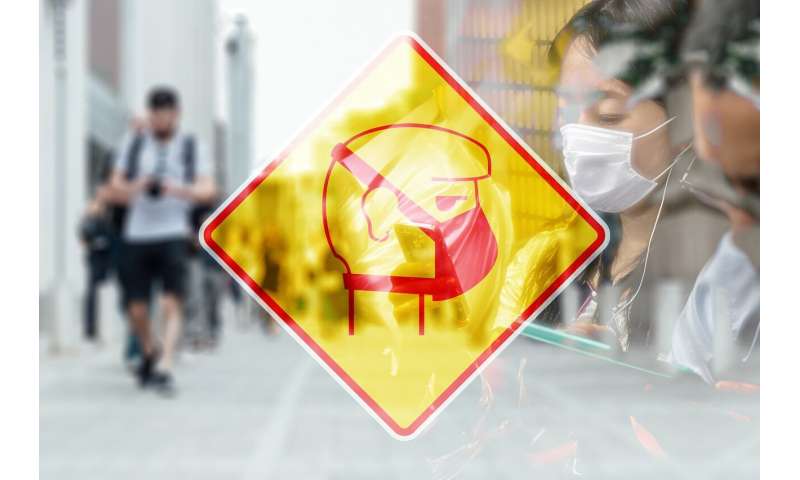
Early complacency, testing failures and the lack of a nationwide response allowed the coronavirus to explode in the US, which has by far the highest number of confirmed cases in the world.
But while hotspots like New York face a dire lack of protective gear, ventilators and medics, early-hit regions like Washington state and California show there is a pathway out of the public health crisis.
With the number of people known to be infected closing in on 350,000 and more than 10,000 deaths, here is a guide to what we know so far and what might may happen next.
Complacency
At the start of the outbreak, President Donald Trump scoffed at the idea that sustained spread was “inevitable” even after a senior government scientist said it was, and suggested the disease may disappear “miraculously” by April.
The president’s words were echoed across right wing media, where pundits amplified the idea that the threat was seriously overblown.
“I see it, again, as like, let’s bludgeon Trump with this new hoax,” said Fox News host and close Trump ally Sean Hannity on March 9.
Both have since changed their tune, but the early tone was set.
“The US has terrible federal leadership at the moment, and it has crippled the public health response,” David Fisman, an epidemiologist from the University of Toronto told AFP.
Test, test, test
As the illness took root, initially in the West Coast states of Washington and California, the US was unable to perform meaningful levels of contact tracing because it was so slow off the mark with testing.
The government initially refused to relax regulatory hurdles that would have allowed states and local health departments to develop their own test kits, then the federal government sent out tests to states, adding to delays.
“If we could have done contact tracing, we might have found a lot more cases quickly and shut down the hotspots,” Gabe Kelen, director of emergency medicine at Johns Hopkins University, told AFP.
He emphasized that speed was of the essence, even if the US believed its test kits were superior to other nations’.
“One thing I teach my residents: something is better than nothing, sooner is better than later,” said Kelen.
No national response
Compounding the difficulty of responding to a national crisis is the US federal system of governance, with power devolved to the 50 states.
Nine states have still not yet ordered total lockdowns—all of them controlled by Republican governors, much to the frustration of public health experts.
The state of Washington seems to now be on the downward slope of its case curve and even sent 400 ventilators to hardest-hit New York, but its governor Jay Inslee said he feared a second wave because of the ongoing patchwork response.
“Even if Washington gets on top of this fully, if another state doesn’t, it can come back and come across our borders two months from now, so this is important to have a national success,” he told NBC.
With ventilators and personal protective gear in high demand, several states have reported that their orders from the national stockpile have only been partly met.
But there have also been signs of possible favoritism.
Florida, which was famously slow to order a lockdown because of its impact on tourism, but is key to Trump’s re-election strategy, promptly received 100 percent of its first two requests, according to reports.
To mask or not to mask?
Another factor that set apart Asian countries that contained the virus’ spread better than many of their Western counterparts was their widespread use of surgical face masks.
Western experts initially insisted the coverings were not effective at preventing infection—accordingly, the CDC only recommended that sick people and their caregivers use them.
But a growing body of scholarship showing the virus might be transmitted even when people speak or talk—as opposed to cough or sneeze—and that up to 25 percent of infected people are asymptomatic, made officials change their minds.
What next?
While the US has the third highest number of deaths behind Italy and Spain, it is also a far more populous country than both, and the fatality rate remains relatively low at 2.9 per 100,000.
The White House has officially projected between 100,000 and 240,000 deaths, but whether these grim landmarks will be achieved depends on how fast those states currently carrying on as normal take action, say experts.
Apart from Washington, California is also showing how it’s possible to get on top of the crisis, said epidemiologist Brandon Brown of the University of California, Riverside.
“We are now ramping up testing, starting to measure community spread, preparing spaces for when hospitals may be overrun,” he said. “The communication in California by (Governor Gavin) Newsom has been frequent which helps keep people informed.”
Writing in the New England Journal of Medicine, health policy expert Harvey Fineberg argued a unified national command was imperative, with widespread testing of symptomatic individuals to understand the disease’s scope.
A next step would be identifying those who were infected, recovered and are now immune, through the rapid deployment of test kits that look at people’s antibodies rather than viral load.
Source: Read Full Article
